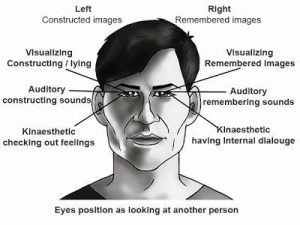Learn the lexicon of the other person
(lowndes) Know who you will be meeting –
- Learn their lexicon / jargon
- Know the issues that matter in their industry/hobby
- Read their news and have shared topics
- Give hooks in your words to help them continue the conversation
IF you are at an event, ask the host to introduce people – who they are and some facts about them
Become interesting by having hooks for conversation
- Learn new things – once a month try something new and read new things
- My Job “I help people to …”
- Add current snippets of news
- What would be interesting to them
- What could they refer to
- What could they buy from me
- Could they hire me
- Grab quotes and phrases and reuse
- Rhythm / clever / funny / relevant
- Prepare jokes for upcoming meetings and topics
- Wear a ‘whatzat’ – a thing that can hook a conversation – pin / broach etc
- Before giving news, assess how the receiver will take it
Feel comfortable by having some pre-prepared conversation openers
- “Hello, I am XYZ, and you are …?”
- “This is my first time here. Have you been before?”
- “How do you find these events? “
- “Have you travelled far?”
- “And what line of business are you in?”
Going Deeper
(Bolles, 1982)
What is your philosophy in life? As you get to know another person, choose some of these heading and find out what your views and their views are in these areas – it will tell you if you have a shared philosophy.
| Beauty | Celebration | Confusion | God |
| Behaviour | Choice | Death | Happiness |
| Beliefs | Community | Events | Heroes and Heroines |
| Truth | Compassion | Freewill | Human |
| Love | Moral Issues | Paradox | Purpose |
| Reality | Self | Spirituality | Stewardship |
| Uniqueness | Values |
|
Choosing your words to match their style
The first step is to learn what communication style someone is. A good starting point is to ask them how they got here, and look at their eyes. They will look to the side that’s about remembering, and the position will tell you if they are a visual, auditory or kinaesthetic thinker.
 With that knowledge you can match your words to them.
With that knowledge you can match your words to them.
Visual
It looks like
They may look away to build impact in their mind. They appreciate diagrams to explain things, and handouts
- I can’t see the way out of this
- I need a new Perspective
- That looks good
- I have a different view of the situation
- We looked after their interests
- Now look here
Typical words:
- Clarify
- Focus
- Look
- See
- Vision
- Perspective
- Clear
- Observe
Auditory
It sounds Like
- I’m not in harmony
- Does that ring a bell?
- I hear you loud and clear
- I’m glad to hear it
- Let me explain
- We’re in tune
- Tell me what you hear
- Everything just clicked
- Clear as a bell
- We’re on the same wavelength
Sound
- Say
- Tell
- Volume
- Listen
- Loud
- Tone
Kinaethestic
It Feels like
Need to check how they are feeling. They may find joint physical activities part of communication
Motion and feeling words
- I feel stuck
- I can’t get a grip on
- I want to get in touch
- That feels right
- Warm Regards
- Get a grip
- Hold on
- Solid as a rock
Touch words
- Feel
- Firm
- Pressure
- Relaxed
- Rough
- Solid
Audio Digital (self talk)
The process is
Often process words or can’t conceive the solution to their problem. Often processing and thinking through the problem. Can be a monotone voice and dissociated from their emotions
- I know that.
- Based on my research…
- That makes sense.
- I have to think about it
- All the ducks are in a row (Order is very important to them.)
Process words
- Process
- Think
- Know
- Details
- Organize
- Cost-effectiveness
- Budget
- Tasks, charts, graphs
Sequence (Keep things in order. Follow the steps.)
Changing the way, you say things
(Bailey, 2006)
Choosing the right stress on words: just stressing a different word changes the tone. With the phrase “What would you like us to do about it?”
- Saying it defensively (emphasising the words ‘would you’)
- What would you like us to do about it?
- Saying it with curiosity (emphasising the words ‘like us’)
- What would you like us to do about it?
- Say it with apathy (not emphasising any of the words)
- What would you like us to do about it?
- Now try the same sentence with different pauses:
- What (pause) would you like us to do about it?
- What would you (pause) like us to do about it?
- What would you like us (pause) to do about it?
- What would you like us to do (pause) about it?
- What impact does each of these pauses do?
- Now try it at different speeds:
- Try it slow – with confidence?
- And then fast – with anxiety.
The more upset you become, the shallower and quicker your breathing will be. When this breathing pattern happens, your vocal cords tend to tighten, making your voice go up and sound strained. So, slow it down and relax, reducing the pitch and calming the voice.
Having tried this out, now consider how you are received irrespective of the words you use.
Adjusting the volume
Match the volume of the room.
- If someone is angry and speaking loudly, don’t yell back at the same volume even though it’s your instinctive reaction may be to do so. Instead, start out by speaking a little lower volume as the other, gradually bringing the other person’s volume down.
- o With someone who is confused, speak a little louder than usual helps give them something to focus on and helps you control the conversation more easily
- Avoid starting out a conversation in too loud a tone of voice as this may signal stress on your part and service to unwittingly increase the other speaker’s volume and stress level.
- Match the other person’s speaking level. If they are talking fast, be faster than normal, and if they are slower, then do the same.
- Match the other person’s intensity (or urgency of the situation). If they think this is urgent and a problem then being calm and saying the problem is no big deal, with irritate them, as they think you don’t understand.
- Empathy and matching their intensity. E.g. ‘I’ll do that immediately’ implies they understand your pressures too.
